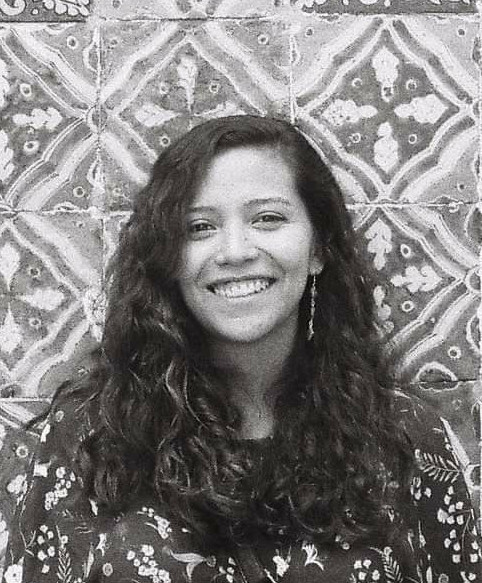culture & justice"
Working Group on Christian Nonviolence

ABOUT US

The Working Group on Christian Nonviolence was born in 2018 with the intention of studying, reflecting and spreading nonviolence from its Christian roots, aiming to contribute to a profound debate and its practice. The Group works mainly for two targets: (1) Christians in general and the Church in particular, and (2) civil society, which includes groups from the areas of Culture, Thinking, Society, Economy, Politics... The Group expects to provide nonviolent perspectives and tools to transform the conflicts that we live.
GROUP MEMBERS
 Joan Morera Perich, Jesuit, Computer Engineer and Master's degree in Biblical Theology
Joan Morera Perich, Jesuit, Computer Engineer and Master's degree in Biblical Theology
 Marta Burguet i Arfelis, PhD in Pedagogy
Marta Burguet i Arfelis, PhD in Pedagogy
 Xavier Garí de Barbarà, PhD in History
Xavier Garí de Barbarà, PhD in History
 Antoni Soler and Ricart, Former President of Fundipau
Antoni Soler and Ricart, Former President of Fundipau
 Mª Dolors Oller i Sala, PhD in Law and Professor of Social Christian Ethics
Mª Dolors Oller i Sala, PhD in Law and Professor of Social Christian Ethics
 Álvaro Mellado Domínguez, Postgraduate in Conflicts, humanitarian worker and researcher
Álvaro Mellado Domínguez, Postgraduate in Conflicts, humanitarian worker and researcher
 Laura Sols Balcells, Graduate in Philosophy and Master's degree in Citizenship and Human Rights: Ethics and Politics.
Laura Sols Balcells, Graduate in Philosophy and Master's degree in Citizenship and Human Rights: Ethics and Politics.
 Josep Maria Riera, Humanistic Architect
Josep Maria Riera, Humanistic Architect
 Andrea Corres, Master's degree in Education for Citizenship, PhD student in Information and Knowledge Society.
Andrea Corres, Master's degree in Education for Citizenship, PhD student in Information and Knowledge Society.
OBJECTIVES
 Nonviolence is an increasingly urgent need within an unjust international order, woven of unequal interpersonal relationships. It is socially assumed that the use of violence (fight) is the most effective strategy to confront the multiple conflicts inherent in human life, but in reality they multiply the vicious destructive circle around them. In addition to violence, only a second response is conceived, flight, which disregards the conflict, and therefore prolongs it. To really dismantle the different violence there is a third way, Nonviolence (NV), up to now applied within the five continents and in the most different historical eras, which creatively and peacefully transforms conflicts from an inclusive combat, with strategies of action based on the study of the internal logics of violence.
Nonviolence is an increasingly urgent need within an unjust international order, woven of unequal interpersonal relationships. It is socially assumed that the use of violence (fight) is the most effective strategy to confront the multiple conflicts inherent in human life, but in reality they multiply the vicious destructive circle around them. In addition to violence, only a second response is conceived, flight, which disregards the conflict, and therefore prolongs it. To really dismantle the different violence there is a third way, Nonviolence (NV), up to now applied within the five continents and in the most different historical eras, which creatively and peacefully transforms conflicts from an inclusive combat, with strategies of action based on the study of the internal logics of violence.
The present Working Group of the Centre d’Estudis Cristianisme i Justícia aims, on the one hand, to deepen and investigate in this third way of transforming conflicts, based on the Christian origins of an important part of nonviolent people and oriented to civil society in general, whatever be their values, beliefs or conditions of all kinds. On the other hand, the Group aims to disseminate this way of living through projects and social-impact documents, contributing to the creation of habitable and liberating spaces. Christians, and citizens in general, are called to reduce violence to the point of making it disappear from their surroundings, empowering the population to detect it and revert its control through the power of nonviolence.
WORK AND ACTIVITIES
The Working Group alternates face-to-face meetings with online and asynchronous work. The framework of activities can be defined in these three main axes, which deploy the two main objectives mentioned (study and dissemination):
-
RESOURCES FOR EDUCATORS IN NONVIOLENCE
 One of the first projects of the Group is "Move Nonviolence", based precisely on the development of a series of multimedia units to deepen and train in Nonviolence (NV) students, members of NGOs, Christian groups, etc. interested in the practice of this way of transforming conflicts. The units consist of an animated video of 2 minutes, associated with a didactic brochure that breaks down with examples and proposals for groups each of the topics of interest in that unit. A series of 12 key topics is expected, headed by the following titles, which we will progressively upload for a free download from here:
One of the first projects of the Group is "Move Nonviolence", based precisely on the development of a series of multimedia units to deepen and train in Nonviolence (NV) students, members of NGOs, Christian groups, etc. interested in the practice of this way of transforming conflicts. The units consist of an animated video of 2 minutes, associated with a didactic brochure that breaks down with examples and proposals for groups each of the topics of interest in that unit. A series of 12 key topics is expected, headed by the following titles, which we will progressively upload for a free download from here:
- Turning oppression upside down
- Is it about facts or identity? Self-criticism.
- The myth of vigilante violence
- How to ruin my peaceful struggle
- Criteria for choosing a nonviolent action
- Historical brushstrokes: what works or does not work in nonviolence?
- Experiences of Nonviolence: the Classical and Middle Ages
- Experiences of Nonviolence: the Modern and Contemporary Ages
- Experiences of Nonviolence in education
- Experiences of Nonviolence in society
- Religions and nonviolence: fuel through spirituality
- Gender violence and fear management
-
PUBLIC CALLS
The Working Group will organize public events such as meetings, seminars or conferences to spread the values of nonviolence in society, to specifically make people discover nonviolence as a necessary consequence of every Christian option, and to contribute to the commitment of transforming conflicts before any reality.
-
ACADEMIC PUBLICATIONS
The reflections and research that will be carried out interdisciplinarily in the Working Group will be also published in the form of single academic documents, journal publications and several studies. We are open to collaborate with all those who, from their academic specialty, can contribute enriching perspectives to the study of nonviolence, and especially with entities and institutions devoted to peace and nonviolence.
RESOURCES
As the Group produces material, we will publish it in this resource section.
WEBSITE DIRECTORY OF INTEREST
1.- STUDY AND DISSEMINATION OF NONVIOLENCE
- Catholic Nonviolence Initiative, that starts from the Conference on Nonviolence and Just Peace (Rome, 2016) to promote Nonviolence within the Catholic Church. https://nonviolencejustpeace.net/
- International Center on Nonviolent Conflict (ICNC) is a study center that analyzes how nonviolent movements become effective, and develops and distributes resources and knowledge based on nonviolent civil resistance. https://www.nonviolent-conflict.org/
- Albert Einstein Institution (AEI) is an NGO founded by Dr. Gene Sharp in 1983, to advance the study and use of strategic nonviolent action in international conflicts. https://www.aeinstein.org/
2.- WORK INITIATIVES FOR PEACE
- Pax Christi International is the International Catholic Movement for Peace, founded in 1945 after the Second World War, to respond to the many challenges that violence put on the face of world conflicts. It is present in more than 50 countries. https://www.paxchristi.net/
- Justícia i Pau is a Christian entity created in 1968 in Catalonia for the defense of human rights, social justice, peace and disarmament, solidarity and the environment. http://www.justiciaipau.org/
- Fundació per la Pau is a foundation created in 1983 in Catalonia for the construction of a world without violence and in peace, promoting the culture of peace and nonviolence. http://fundipau.org/
- Federació Catalana d'ONG per la Pau, els Drets Humans i el Desenvolupament (lafede.cat), was born in 2013 in Catalonia as a network that promotes the collective action of associated entities to achieve social justice, the eradication of inequalities, cooperating in development, defense and the promotion of human rights and the promotion of peace. http://www.lafede.cat
- Universitat Internacional de la Pau (UNIPAU) was created in 1984 in Catalonia with the aim of creating conditions and providing the necessary tools for training, debate, reflection and the exchange of opinions and experiences on conflicts and peace building. http://www.universitatdelapau.org
3.- PEDAGOGICAL RESOURCES ON NOVIOLENCE
- Asociación Educar en la Nonviolencia gathers a list of games, workshops and practical initiatives to work with nonviolence. https://educarenlanoviolencia.wordpress.com/
- International Film Festival of Active Nonviolence, an initiative to promote the dissemination of the multiple testimonies of nonviolence practiced in the world. http://www.festivalcinenoviolencia.org
BIBLIOGRAPHY
1.- STUDY OF CHRISTIAN NONVIOLENCE
- Bahnson, F. & Wirzba, N. (2012). Making Peace With the Land: God’s Call to Reconcile with Creation. Downers Grove: IVP Books.
- Ballou, A. (1846). Christian non-resistance, in all its important bearings, illustrated and defended. Philadelphia: J. Miller M'Kim.
- Berger, R.M., Butigan, K., Coode, J. & Dennis, M. (2020). Advancing Nonviolence and Just Peace in the Church and the World. Brussels: The Catholic Nonviolence Initiative (Pax Christi International)
- Borda-Malo, S. (2011). Filosofía de la Noviolencia y crítica de la razón violenta. Tunja (Colombia): Universidad Santo Tomás.
- Borda-Malo, S., González, E. (2022). Diccionario Lanza del Vasto: La Noviolencia de Gandhi. México: Aliosventos (edición virtual)
- Brooks, S. (2011). Interfaith Just Peacemaking: Jewish, Christian, and Muslim Perspectives on the New Paradigm of Peace and War. London: Palgrave Macmillan.
- Butigan, K. & Bruno, P. (collaborator) (1999). From Violence to Wholeness: A Ten Part Program in the Spirituality and Practice of Active Nonviolence. Corvallis: Pace e Bene Franciscan Nonviolence Center.
- Castillo, J.M. (1999). Iglesia y Derechos Humanos. Madrid: Nueva Utopía.
- Carrol, D. (2014). Catholic Realism and the Abolition of War. Maryknoll: Orbis Books.
- Christiansen, D. & Sargent, C. (2020). A World Free from Nuclear Weapons: The Vatican Conference on Disarmament. Washington D.C.: Georgetown University Press.
- Corral, L. (1993). La no-violencia. Historia y perspectivas cristianas. Madrid: CCS.
- Crossan, J.D. (2017). Cómo leer la Biblia y seguir siendo cristiano. Luchando con la violencia divina desde el Génesis al Apocalipsis. Madrid: PPC.
- Dear, J. (1992). Seeds of Nonviolence. Baltimore: Fortkamp Publishing Co.
- Dear, J. (1998). Henri Nouwen. El camino hacia la paz. Santander: Sal Terrae.
- Dear, J. (2000). Jesus the Rebel: Bearer of God’s Peace and Justice. New York: Sheed & Ward.
- Dear, J. (2005). The God of Peace: Toward A Theology of Nonviolence. Eugene: Wipf and Stock.
- Dear, J. (2008). Put Down Your Sword: Answering the Gospel Call to Creative Nonviolence. Grand Rapids: Eerdmans.
- Dear, J. (2013). The Nonviolent Life. Corvallis: Pace e Bene Press.
- Dear, J. (2015). The Beatitudes of Peace. New London: Twenty-Third Publications.
- Dear, J. (2015). Walking the Way: Following Jesus on the Lenten Journey of Gospel Nonviolence to the Cross and Resurrection. New London: Twenty-Third Publications.
- Dear, J. (2018). They Will Inherit the Earth. Peace and Nonviolence in a Time of Climate Change. Maryknoll: Orbis Books.
- Dennis, M. (2018). Choosing Peace: The Catholic Church Returns to Gospel Nonviolence. Maryknoll: Orbis Books.
- Denny Weaver, J. (2013). The Nonviolent God. Grand Rapids, MI: Eerdmans.
- Driver, J. (1978). Militantes para un mundo nuevo. Barcelona: Ed. Evangélicas Europeas.
- Goss-Mayr, J.H. (1990). Evangelio y lucha por la paz. Salamanca: Sígueme.
- Häring, B. (1989). La no violencia. Una forma de cultura y esperanza. Barcelona: Herder.
- Häring, B. (1993). Evangelio, no-violencia y contestación. Madrid: PS.
- Keeney, W. (1978). La estrategia social de Jesús. Barcelona: Ed. Evangélicas Europeas.
- King, M.L. (1998). La força d’estimar. Barcelona: Edicions Proa.
- Kosek, J. K. (2009). Acts of Conscience: Christian Nonviolence and Modern American Democracy. New York: Columbia University Press.
- Laffin, A. (2020). The Risk of the Cross: Living Gospel Nonviolence in the Nuclear Age. New London: Twenty-Third Publications.
- Lanza del Vasto, G. (1955). Comentario del Evangelio. Buenos Aires: Editorial Sur.
- Lanza del Vasto, G. (1961). Las cuatro plagas: Buenos Aires, Editorial Sur.
- Lanza del Vasto, G. (1962). Principis i preceptes del retorn a l’Evidència. Barcelona: Ossa Menor.
- Lanza del Vasto, G. (1989). Umbral de la vida interior. Salamanca: Sígueme.
- Lanza del Vasto, G. (1992). Vida interior i no-violència. Barcelona: Publicacions de l’Abadia de Montserrat.
- Lanza del Vasto, G. (1993). La fuerza de los no-violentos. Bilbao: Mensajero.
- Lanza del Vasto, G. (1997). La peregrinación a las fuentes. Barcelona: Seix Barral.
- Llarch, J. (1982). Martin Luther King, una vida por la paz. Barcelona: Juventud.
- Lohfink, N. (1990). Violencia y pacifismo en el Antiguo Testamento. Bilbao: Desclée de Brouwer
- Long, M.G. (2011). Christian Peace and Nonviolence: A Documentary History. Maryknoll: Orbis Books.
- Maresca, C. (2019). Violence and Nonviolence in Scripture. Helping Children Understand Challenging Stories. Chicago: Liturgy Training Publications.
- Mast, G.J. & Weaver, J.D. (2009). Defenseless Christianity: Anabaptism for a Nonviolent Church. Telford: Cascadia Publishing House.
- Mato, M. (2020). El camino de la noviolencia. Filosofía y práctica. Razones y experiencias. Amor y política. Getafe: Mercurio.
- McCarthy, E.S. (2012). Becoming Nonviolent Peacemakers: A Virtue Ethic for Catholic Social Teaching and U.S. Policy. Eugene: Wipf & Stock Pub.
- McCarthy, E.S. (ed.)(2020). A Just Peace Ethic Primer. Building Sustainable Peace and Breaking Cycles of Violence. Washington D.C.: Georgetown University Press
- Morera, J. (2018). Desarmar els inferns. Practicar la noviolència de Jesús avui. Quaderns Cristianisme i Justícia, 207.
- Müller, J.M. (1969). L’evangile de la non-violence. París: Fayard.
- Nepstad, S.E. (2004). Convictions of the Soul: Religion, Culture, and Agency in the Central America Solidarity Movement. Oxford: Oxford University Press.
- Nepstad, S.E. (2008). Religion and War Resistance in the Plowshares Movement. Cambridge: Cambridge University Press.
- O'Gorman, A. & McCarthy, C. (1990). The Universe bends toward justice : a reader on Christian nonviolence in the U.S. Philadelphia: New Society Publishers.
- Rynne, T.J. (2008). Gandhi and Jesus: The Saving Power of Nonviolence. Maryknoll: Orbis Books.
- Rynne, T.J. (2014). Jesus Christ, Peacemaker: A New Theology of Peace. Maryknoll: Orbis Books.
- Sasaran, E. (2012). Becoming Nonviolent Peacemakers. A Virtue Ethic for Catholic Social Teaching and U.S. Policy. Eugene: Pickwick Publications.
- Schlabach, G.W. (2019). A Pilgrim People. Becoming a Catholic Peace Church. Collegeville: Liturgical Press Academic.
- Schreiter, R.J., Scott R. & Powers, G.F. (eds.) (2010). Peacebuilding: Catholic Theology, Ethics, and Praxis. Maryknoll: Orbis Books.
- Sider, R.J. (2015). Nonviolent Action: What Christian Ethics Demands but Most Christians Have Never Really Tried. Ada: Brazos Press.
- Sider, R.J. (2019). If Jesus Is Lord. Loving Our Enemies in an Age of Violence. Ada: Baker Academic.
- Slattery, L., Butigan, K., Pelicaric, V. & Preston, K. (2005). Engage: Exploring Nonviolent Living: a Study Program for Learning, Practicing, and Experimenting with the Power of Creative Nonviolence to Transform our Lives and our World. Corvallis: Pace e Bene Press.
- Sowle, L. (1994). Love your enemies: Discipleship, pacifism and Just War Theory. Minneapolis: Augsburg Fortress Publishers.
- Trocmé, A. (2014). Jesus and the Nonviolent Revolution. Walden: Plough Publishing House.
- Vaillant, F. (1993). La no violencia en el Evangelio. Santander: Sal Terrae.
- Weaver, J.D. (2001). The Nonviolent Atonement. Grand Rapids: Wm. B. Eerdmans Publishing Co.
- Windass, S. (1971). El cristianismo frente a la violencia: estudio sociológico e histórico de la actitud del cristianismo frente a la guerra. Madrid: Marova.
- Wink, W. (1992). Beyond Just War and Pacifism: Jesus’ Nonviolent Way. Review&Expositor, 89(2), 197-214.
- Wink, W. (2003). Jesus and Nonviolence: A Third Way. Minneapolis: Fortress Press.
- Wink, W. (1999). The Powers That Be. Theology for a New Millenium. New York: Doubleday.
- Yoder, T.R. (2011). Killing Enmity: Violence and the New Testament. Ada: Baker Academic.
2.- EDUCATIONAL TOOLS FOR NONVIOLENCE
- Alzate, R. (2000). Resolución del conflicto. Programa para bachillerato y educación secundaria. (2 volums). Bilbao: Mensajero.
- Banda, A. (1991). Educació per la Pau. Barcelona: Barcanova.
- Benson, B. (2003). El llibre de la pau. Barcelona: Editorial Claret.
- Burguet, M. (1999). El educador como gestor de conflictos. Bilbao: Desclée de Brouwer.
- Butigan, K. & Bruno, P. (1999). From Violence to Wholeness: A 10-part process in the spirituality and practice of active nonviolence. Corvallis: Pace e Bene Franciscan Nonviolence Center.
- Cascón, P. y Beristáin, C.M. (1998). La alternativa del juego I. Juegos y dinámicas de educación para la paz. Madrid: Los libros de la Catarata.
- Dear, J. (2017). Radical Prayers: On Peace, Love and Nonviolence. Corvallis: Pace e Bene Press.
- Dumé, M.A. i Soler, A. (1996). Educació per la Pau, Geografia dels conflictes. Barcelona: Editorial Claret.
- Girard, K. i Koch, S.J. (1997). Resolución de conflictos en las escuelas. Manual para educadores. Buenos Aires: Ediciones Granica.
- Jares, X.R. (2004). Educar para la paz en tiempos difíciles. Bilbao: Bakeaz.
- Joan, M. & Park, T. (2015). Live Peace, Teach Peace. Best Practices and Tools. Mt. Rainier: Little Friends for Peace.
- Judson, S. (2000). Aprendiendo a resolver conflictos. Madrid: Los libros de la Catarata.
- Lederach, J.P. (1998). Construyendo la paz: reconciliación sostenible en sociedades divididas. Bilbao: Gernika Gogoratuz.
- Lederach, J. P. (2000). El abecé de la paz y los conflictos: educación para la paz. Madrid: Catarata.
- Lederach, J.P., Neufeldt, R. i Culbertson, H. (2013). Construcció de pau reflexiva. Barcelona: ICIP.
- Müller, J.M. (2013). La noviolència a l’educació. Barcelona: ICIP.
- Navarro-Castro, L. and Nario-Galace, J. (2008). Peace Education. A Pathway to a Culture of Peace. Quezon City: Center for Peace Education.
- Seminario de Educación para la Paz (Asociación Pro Derechos Humanos) (2000). Educar para la paz. Una propuesta posible. Madrid: Los libros de la Catarata.
- Slattery, L., Butigan, K., Pelicaric, V. & Preston, K. (2005). Engage: Exploring nonviolent living. Oakland: Pace e Bene Nonviolence Service.
- Soler, A. (2001). Això és la cultura de pau. Barcelona: Mediterrània.
- Vinyamata, E. (coord.) (2003). Aprender del conflicto. Conflictología y educación. Barcelona: Graó.
- York, T. & Bronson, J. (ed.)(2012). A Faith Not Worth Fighting For: Addressing Commonly Asked Questions About Christian Nonviolence. Eugene: Cascade Books.
- York, T. & Alexis-Baker, A. (2012). A Faith Embracing All Creatures: Addressing Commonly Asked Questions about Christian Care for Animals. Eugene: Cascade Books.
3.- SET OF WORKS ON NONVIOLENCE
- Ackerman, P. & Kruegler, C. (1994). Strategic Nonviolent Conflict: The Dynamics of People Power in the Twentieth Century. Westport: Praeger Publishers.
- Arias, G. (1985). La noviolencia, ¿tentación o reto? Madrid: Edición particular.
- Arias, G. (1995). El proyecto político de la no violencia. Madrid: Nueva Utopía.
- Arias, G. (1995). El ejército incruento del mañana. Madrid: Nueva Utopía.
- Arias, G. (2007). La historia ramificada. Autoedició.
- Bastida, A. (1994). Desaprender la guerra. Barcelona: Icaria.
- Castañar, J. (2013). Teoría e historia de la revolución noviolenta. Barcelona: Virus.
- Chenoweth, E. & Stephan, M.J. (2012). Why Civil Resistance Works The Strategic Logic of Nonviolent Conflict. New York: Columbia University Press.
- Cortright, D. (2008). Peace: A History of Movements and Ideas. Cambridge: Cambridge University Press.
- Cortright, D. (2006). Gandhi and Beyond: Nonviolence for an Age of Terrorism (2nd ed.). Boulder: Paradigm Publishers.
- Curle, A. (2013). Estudios de paz y conflictos. Bilbao: Gernika Gogoratuz.
- Garí, X. (2019). Orígens i evolució del moviment per la pau a Catalunya (1950-1980). Barcelona: ICIP i Pagès Editors.
- Grupo Transcend (2006). Trascender los conflictos. La perspectiva de Johan Galtung. Revista Futuros, IV(13).
- Helvey, R. (2004). On Strategic Nonviolent Conflict: Thinking about the Fundamentals. Boston: The Albert Einstein Institution.
- Kurlansky, M. (2012). Noviolència: història d’una idea perillosa. Barcelona: Pagès.
- Lawler, P. (1995). A Question of Values. Johan Galtung’s Peace Research. Colorado: Lynne Rienner Publishers.
- Martínez Guzmán, V. (2005). Podemos hacer las paces. Reflexiones éticas tras el 11-S y el 11-M. Bilbao: Desclée de Brouwer.
- Martínez, G. y Jiménez, J.M. (2005). Los humanos ni violentos ni pacíficos por naturaleza, sino todo lo contrario, en Pérez, C.; Muñoz, F. (2004). Experiencias de paz en el mediterráneo. Cuadernos Geográficos, jul-dic, 35. Granada: Universidad de Granada.
- Merton, T. (1998). Gandhi y la no-violencia. Una selección de los escritos de Mahatma Gandhi editados por Thomas Merton. Barcelona: Ediciones Oniro.
- Müller, J.M. (1983). Estrategia de la acción no-violenta. Barcelona: Hogar del Libro.
- Müller, J.M. (1994). La sagasse de la non-violence. Bilbao: Desclée de Brouwer.
- Müller, J.M. (1995). L’exigence de non-violence. Bilbao: Desclée de Brouwer.
- Nepstad, S.E. (2011). Nonviolent Revolutions: Civil Resistance in the Late 20th Century. Oxford: Oxford University Press.
- Nepstad, S.E. (2015). Nonviolent Struggle: Theories, Strategies, and Dynamics. Oxford: Oxford University Press.
- Pérez, J.A. (1994). Manual práctico para la desobediencia civil. Pamplona: Pamiela.
- Pinker, S. (2012). Los ángeles que llevamos dentro. El declive de la violencia y sus implicaciones. Barcelona: Paidós.
- Schlabach, G.W. (ed.)(2007). Just Policing, Not War: An Alternative Response to World Violence. Collegeville: Liturgical Press.
- Stassen, G.H. (2008). Just Peacemaking: The New Paradigm for the Ethics of Peace and War. Cleveland: Pilgrim Press.
CONTACT
Joan Morera Perich (Group Coordinator)
noviolenciacristiana@gmail.com
https://www.cristianismeijusticia.net/en/christiannonviolence
Lluís Espinal Foundation. Christianity and Justice Research Center
www.cristianismeijusticia.net/en
Llúria 13, 08001 Barcelona


